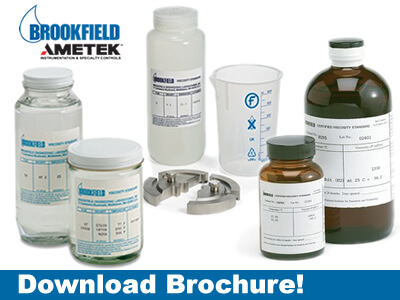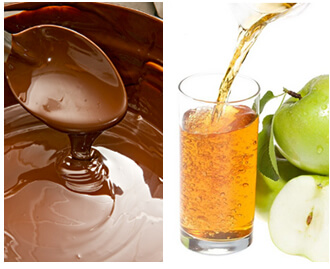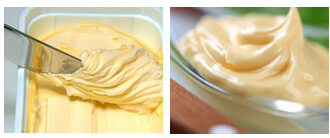Viscosity Standards: Avoid Production Downtime
Regular use of Viscosity Standards helps to keep your measurements accurate, your QC Lab happy and production lines running.

Viscosity testing is a crucial step in QC labs for many industries - especially food - not only at final production stages before the product is shipped to consumers, but also in the middle of production to make sure the mixtures are developing correctly.
Anything with a variable flow behaviour can be measured for viscosity - from soft-drinks to pastes, creams, sauces, etc. However to achieve correct and satisfactory viscosity results, there’s a few few important steps you should take. See our article: 3 Simple Steps for Successful Viscosity, where we discuss these in more detail.
In this article we will discuss another important step in the process of ensuring successful viscosity measurement. This step is so vital that it can reduce product line downtime and improve viscosity results. Namely, using the right standard!
A Brookfield Viscometer/Rheometer can measure a broad viscosity range, depending on choice of spindle and rotational speed. The flexibility this kind of instrument provides is very useful as it allows labs to test a wider array of products – with the same instrument.
Having good practises in place while using the viscometer, like calibrating it to the right standard, ensures the viscosity measurements, or the results specification, are always going to be correct, reliable and therefore accepted by the QC lab.
When there is an issue with a QC test and the results are not what they are expected to be, this can mean a halt in the production line.

When unexpected results are produced during testing, this can cause a lot of panic because it can ultimately mean stopping production while the origin of the problem is determined, or the disposal of that batch if QC checks are not being met. Both these outcomes can prove very costly, so the user will want to be very sure of their results before making this decision.
For some, there may be in instinct to blame the instrument as being at fault instead of the product. The reason behind this thought is that a problem with the instrument is easier to fix, at least in the short term.
However, labs where best practise policies are put in place know and understand that the use of viscosity standard fluids is the right way to quickly solve, and in some instances prevent, this type of occurrence.
How? Very easily! Each viscosity standard has a known stock value, established by the manufacturer of the liquid, which the instrument should be able to measure/read when testing such fluid. The instrument operator will often select a standard with a centipoise value that closely matches the actual viscosity of the product that they are manufacturing, to assure measurements are correct.
This is why the regular use of viscosity standards to check if your viscometer is working correctly is an important practice to avoid certain types of problems that lead to production halts.
But what if your product’s centipoise value is not covered by regular viscosity standards?
There are times when a stock value for available viscosity standards does not come close enough for a specific purpose and a special blend is required.

If a user needs 2,000 centipoise, for example, the stock values that come close to this are 1,000 and 5,000 centipoise. This new standard is made by blending the two stock values in appropriate portions, until the desired value of 2,000 centipoise is achieved.
The process of searching for and achieving a bespoke standard that fits your needs might be slightly costlier. However, when the need for accuracy and precision in the QC lab is satisfied with such special standards, the cost becomes secondary, when the alternative would have been to stop production.
Particularly if a manufacturer is producing different types of products with different viscosity points. Then the use of multiple viscosity standards is required to keep viscosity measurements in spec, the QC lab happy and production lines running.
Brookfield Ametek Viscosity standards come in a number of stock values, ranging from 5 centipoise to 100,000 Centipoise. This is the range most often required by industrial QC labs that work with viscosity standards. However, values outside this range are also available.
Each Brookfield standard is manufactured with a label on the fluid container and a separate certificate, which clearly identifies the viscosity value and the temperature at which it was calibrated. In most cases, standards are calibrated at 25° C, however additional calibration temperatures can also be done upon request.
Remember, it is recommended to keep the standards calibration certificate on file for reference and in case of audit.
Where Can I Find Out More About Viscosity Standards?
Be sure to check out our Viscosity Standard FAQ page and the full range of Viscosity Standards available on our website. If you have a need that is not covered in this range, please contact our Sales Team. You can also see the full Brookfield Ametek Viscometer range on our website.
Check Out the Viscosity Standards! |
Discover Viscosity, Texture & Powder with Lab Unlimited!
Discover more about viscosity, texture, and powder analysis with Lab Unlimited.
Contact our team for technical support, guidance, or to explore our full range of Brookfield AMETEK instruments and viscosity standards.
